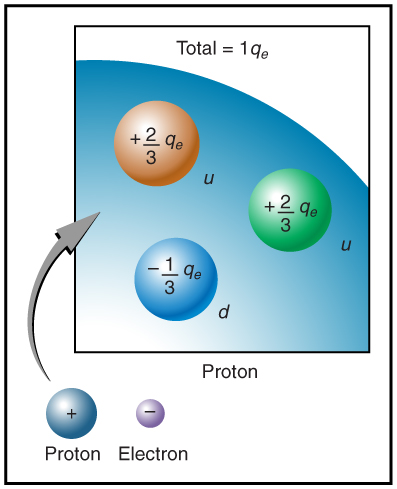| << Chapter < Page | Chapter >> Page > |

Charges in atoms and molecules can be separated—for example, by rubbing materials together. Some atoms and molecules have a greater affinity for electrons than others and will become negatively charged by close contact in rubbing, leaving the other material positively charged. (See [link] .) Positive charge can similarly be induced by rubbing. Methods other than rubbing can also separate charges. Batteries, for example, use combinations of substances that interact in such a way as to separate charges. Chemical interactions may transfer negative charge from one substance to the other, making one battery terminal negative and leaving the first one positive.

No charge is actually created or destroyed when charges are separated as we have been discussing. Rather, existing charges are moved about. In fact, in all situations the total amount of charge is always constant. This universally obeyed law of nature is called the law of conservation of charge .
Total charge is constant in any process.
Hence if a closed system is neutral, it will remain neutral. Similarly, if a closed system has a charge, say, −10 e , it will always have that charge. The only way to change the charge of a system is to transfer charge outside, either by bringing in charge or removing charge. If it is possible to transfer charge outside, the system is no longer closed/isolated and is known as an open system. However, charge is always conserved, for both open and closed systems. Consequently, the charge transferred to/from an open system is equal to the change in the system's charge.
For example, each of the two materials (amber and cloth) discussed in [link] have no net charge initially. The only way to change their charge is to transfer charge from outside each object. When they are rubbed together, negative charge is transferred to the amber and the final charge of the amber is the sum of the initial charge and the charge transferred to it. On the other hand, the final charge on the cloth is equal to its initial charge minus the charge transferred out.
Similarly when glass is rubbed with silk, the net charge on the silk is its initial charge plus the incoming charge and the charge on the glass is the initial charge minus the outgoing charge. Also the charge gained by the silk will be equal to the charge lost by the glass, which means that if the silk gains –5 e charge, the glass would have lost −5 e charge.

Notification Switch
Would you like to follow the 'College physics for ap® courses' conversation and receive update notifications?